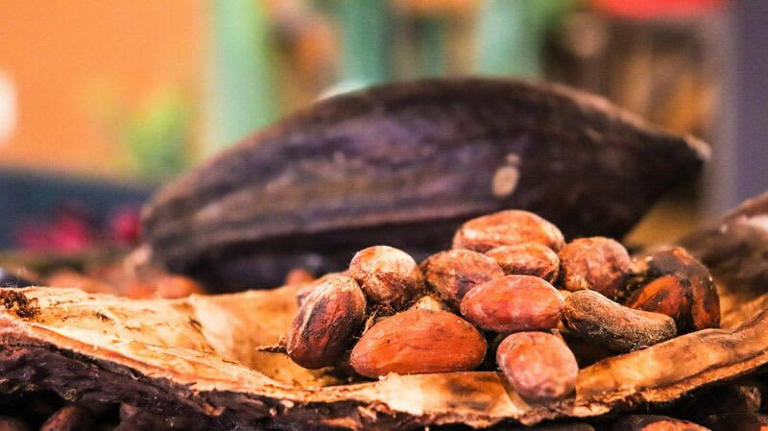On Friday, September ICE NY cocoa (CCU24) closed down by -379 points (-4.70%), and September ICE London cocoa #7 (CAU24) closed down by -285 points (-4.30%). Initially, cocoa prices experienced an upward movement due to stronger-than-expected demand, which was supported by positive reports on cocoa grindings from major regions. The National Confectioners Association reported a +2.2% year-on-year (y/y) increase in Q2 North American cocoa grindings, totaling 104,781 metric tons (MT). This was contrary to expectations of a slight decline. Additionally, the Cocoa Association of Asia reported a smaller-than-anticipated decline of -1.4% y/y in Q2 Asian cocoa grindings to 210,958 MT, better than the forecasted -2.0% y/y drop. Moreover, the European Cocoa Association reported an unexpected +4.1% y/y rise in Q2 European cocoa grindings to 357,502 MT, surpassing expectations of a -2% y/y decline.
Influence of Weather Conditions
However, the initial gains were offset by news of improved growing conditions in West Africa, the world’s largest cocoa-producing region. Forecaster Maxar Technologies indicated that showers are expected to continue throughout the week in most cocoa-growing regions of West Africa. This favorable weather is anticipated to enhance soil moisture, benefiting crop growth and potentially boosting cocoa yields. Improved growing conditions could increase the supply of cocoa beans, leading to a drop in prices as the market anticipates higher future yields.
Tighter U.S. Cocoa Supplies
Supporting the cocoa prices were tighter U.S. cocoa supplies. ICE-monitored cocoa inventories held in U.S. ports fell to a 3.5-year low of 3,100,681 bags. Reduced inventory levels can create supply constraints, leading to higher prices. However, the overall bearish sentiment on Friday overshadowed this factor, leading to a decline in prices.
Ivory Coast Production Concerns
Lower cocoa production in the Ivory Coast, the world’s largest producer, continues to provide underlying support for cocoa prices. From October 1 to July 14, Ivory Coast farmers shipped 1.62 million metric tons (MMT) of cocoa to ports, a -29% decrease compared to the same period last year. Trader Ecom Agroindustrial projects that Ivory Coast’s cocoa production for the 2023/24 marketing year will fall -21.5% y/y to an eight-year low of 1.75 MMT. This significant reduction in output supports prices as it suggests tighter future supplies.
Ghana’s Production Forecasts
Conversely, a bearish factor was Ghana’s cocoa regulator projecting on June 13 that Ghana’s 2024/25 cocoa production would rebound to 700,000 MT from 425,000 MT in 2023/24 due to improved weather conditions. Ghana’s 2024/25 cocoa harvest begins in October, and expectations of a rebound in production could increase future supplies, exerting downward pressure on prices.
Mid-Crop Concerns
Concerns about the West African mid-crop, which is the smaller of the two annual harvests, also influence cocoa prices. Ghana’s mid-crop projections, starting in July, have been cut to 25,000 MT compared to an earlier forecast of 150,000 MT. Similarly, the Ivory Coast’s mid-crop, starting in April, is expected to fall -33% to 400,000 MT from 600,000 MT last year. Nigeria’s mid-crop projections have also been reduced to 76,500 MT from an earlier estimate of 90,000 MT. Ghana’s Cocoa Board (Cocobod) stated on March 25 that Ghana’s 2023/24 cocoa harvest would be only 422,500 MT to 425,000 MT, a 22-year low, due to extreme weather and disease affecting the cocoa crop.
Regulatory and Export Restrictions
On June 12, Reuters reported that Ghana might delay delivering up to 350,000 MT of cocoa beans to the next season due to poor crops. Additionally, the Ivory Coast cocoa regulator, Le Conseil du Cafe-Cacao, announced on June 7 that companies without processing plants in the Ivory Coast could not buy cocoa beans from the Ivory Coast mid-crop until at least the end of July. However, the regulator allowed forward sales to resume for the 2024/25 cocoa crop to buyers with domestic processing plants on July 11. These regulatory actions can create short-term supply constraints, supporting prices.
International Cocoa Organization (ICCO) Projections
In a bullish development, the International Cocoa Organization (ICCO) projected on May 31 a 439,000 MT cocoa deficit for 2023/24, 17% larger than its February estimate of 374,000 MT and significantly higher than the 74,000 MT deficit in 2022/23. ICCO also projected that 2023/24 cocoa production would fall -11.7% y/y to 4.461 MMT, and a 2023/24 global cocoa stocks/grindings ratio at a 46-year low of 27.4%. These projections indicate a tighter global cocoa supply situation, supporting higher prices.
Summary
In summary, the cocoa market experienced a mix of bullish and bearish factors, leading to volatile price movements. Initially, stronger-than-expected demand supported prices, but improved growing conditions in West Africa led to a sharp decline. Tight U.S. cocoa supplies and lower production in the Ivory Coast provided underlying support, while projections of increased production in Ghana and mid-crop concerns in West Africa added to the complexity. Regulatory actions and ICCO’s deficit projections further influenced the market. Investors and traders should closely monitor these factors to navigate the volatile cocoa market effectively.
